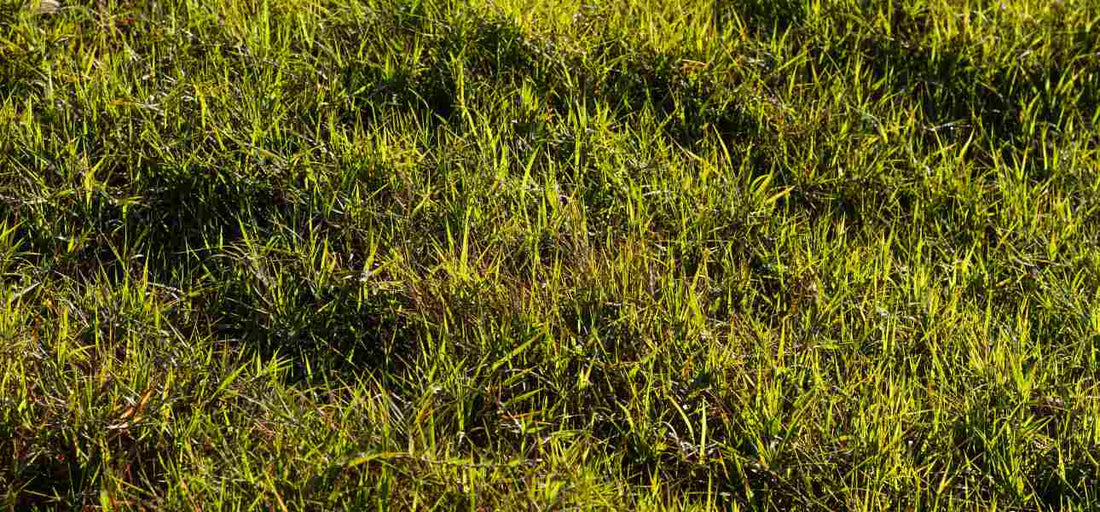
Winter Lawn Care: How to Prepare Grass for the Cold Weather
Jamie TedderWith the warm, humid, sub-tropical climate in Florida, you'd think that you're in the clear for preparing your lawn for the winter.
But while there's no snow to shovel or ice to clear on the driveway, the shorter days, lower light intensity, and temperature drops during this season result in slower-growing lawns. It may also prompt warm-season grasses native to the region to enter a dormant state.
Why Do Grass Plants Go Dormant?
Warm-season grass varieties like Bermuda, St. Augustine, and Zoysia are widely found in Florida lawns. When temperatures begin to dip below their optimal growth range, around 50°F, these grasses usually become dormant and become brown. This natural adaptation helps them conserve energy and endure winter drought conditions. Some lawn areas may turn brown, while others may retain their green color, particularly in areas near structures and under tree canopies where the soil temperatures are warmer.
Despite the challenges specific to Florida, such as milder winter temperatures and occasional weather fluctuations, it remains essential to maintain a healthy lawn during this season. Read on for winter lawn care tips to effectively address these issues and boost your grass's resilience against winter-associated damage.

Your Guide to Winter Lawn Care
Winterizing your lawn involves a comprehensive approach to keeping your yard healthy. It sets the stage for resilient growth and ensures the overall well-being of your grass when spring arrives. Initial steps in lawn care in winter involve fertilizing and aerating your soil to remove excess moisture and prevent soil compaction.
Aerate Your Lawn Soil
Aerating remains a key part of lawn care when transitioning between seasons, even in winter. This process loosens compacted soil, improving drainage and allowing air, water, and nutrients to penetrate the soil better and reach the roots. This, in turn, facilitates the development of a healthier and more resilient lawn.
Consider aerating from late fall to mid-winter, avoiding lower temperatures when the grass becomes dormant. You can use a grass plug tool to double as an aerator and extract soil plugs across your lawn.
Fertilize Properly
Although late summer to early fall is the optimal window for lawn fertilization, applying fertilizer in the winter can also benefit your grass by providing energy reserves for winter dormancy. During this season, grass stores essential nutrients, which then provides your lawn with a headstart for lush, green growth when spring arrives.
However, be cautious not to use too much fertilizer as it may lead to over-fertilization and nutrient leaching, causing more damage than good to your plants and the environment.
Clear Debris
Keep your grass clear of fallen leaves. These can accumulate into dense, wet layers of debris that can suffocate your lawn, trapping excess moisture and creating an environment conducive to pests and diseases like root rot. Use a light rake or brush to sweep the lawn. Additionally, consider temporarily relocating lawn furniture and spare logs for the season to clear your landscape.

Water Thoughtfully
Winter in Florida is generally mild and dry, so your grass may not go fully dormant and require occasional watering. It's advisable to water deeply but less frequently, usually 1-2 times a week, to keep the soil moist.
You can also adjust your watering schedule based on your lawn's specific requirements, taking into account the weather. Keep an eye out for signs of dryness, such as wilting or discoloration, and water accordingly. However, be mindful of maintaining a balance, as insufficient watering can be just as problematic as overwatering, leading to issues like weed growth and fungal disease.
Continue Mowing
With the persisting mild temperatures in Florida, your grass will continue growing at some measurable rate. So, adhere to your regular mowing routine as long as there is active growth and the weather permits. The optimal height for most warm-season grass plants is around 2.5-3 inches.
Reduce Foot Traffic
Dormant grass can handle moderate traffic, but it's prone to stress and compaction, limiting air and water flow and potentially delaying spring greening.
Minimize foot traffic to safeguard your grass during winter. If it's necessary to walk on the grass, stay on designated walkways instead to reduce impact. Consider postponing any activities that use heavy equipment until the warmer months when the grass is actively growing again.
Keep an Eye Out for Weeds and Diseases
Weed and disease control are year-round necessities in Florida. Dormant grass is particularly vulnerable to these issues, highlighting the importance of consistent lawn care practices, including proper mowing, fertilization, and watering. If you've missed the opportunity to use pre-emergent herbicides in the fall, consider alternatives like hand-pulling or spot-treating with post-emergent herbicides during winter to address weed concerns.
Additionally, keep an eye out for signs of diseases, like brown patches, discoloration, or thinning grass. Even with proper upkeep, the risk of fungal diseases persists in cooler temperatures.

Should You Lay Sod in Winter?
Although spring and early fall set the optimal conditions for laying sod, you can lay sod pallets any time of the year, as long as the ground is not frozen and you have sufficient water to help sod successfully root.
Additionally, if your existing lawn does not recover and green up in spring, you can uproot decayed vegetation and install new sod. You can also use grass plugs to repair smaller sections of your lawn, particularly in areas most exposed to cold temperatures.
While winter may be a more relaxed period for lawn care, it provides a strategic window to set the groundwork for your spring maintenance efforts. These measures collectively minimize the potential risks associated with winter, promote resilience, and maintain a healthy green cover year-round.
Did you find this article helpful? Share your thoughts by leaving a comment.

